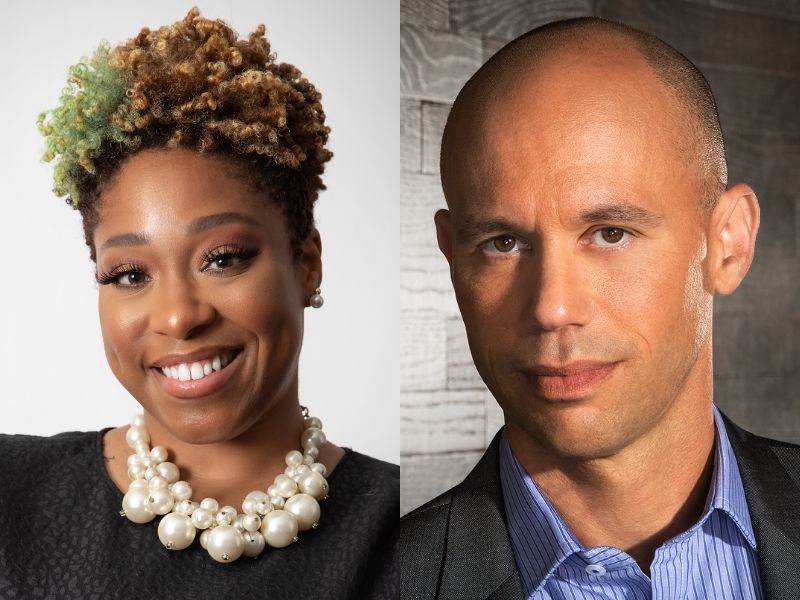Carmella Glover and Aaron Kwittken 15 Mar 2022 // 7:21PM GMT

The incremental progress toward racial equity, equality, and belonging in the workplace is unacceptable. More effort, action, awareness, and change are urgently needed. We must keep our foot on the gas and aim for sustained, transformational change in the workplace. You have no argument from us on that point.
However, race and ethnicity may have disproportionately dominated the diversity, equity & inclusion (DEI) conversations, actually diminishing the breadth and impact of DEI efforts and synonymizing it solely with race. DEI should be synonymous with “Big Inclusivity” in the same way the Civil Rights Act addresses all protected classes outside of the majority, cis-gendered, able-bodied, straight, white, Christian, men.
The laser focus on one group is analogous to extinguishing just one fire while other fires grow. We get the big one under control, maybe even get overconfident, move on and look away. Embers stealthily remain until another catalyzing wind blows (i.e., George Floyd‘s murder), spawning more fires. If, instead, resources are equitably (not necessarily equally) distributed, more fires can be simultaneously and fully fought and extinguished. Ignoring all the other fires and failing to stomp out sneaky embers is counterproductive and dangerous. Big or small, all fire is damaging and spreads quickly.
Despite our best intentions, the state of DEI in PR is still on fire because the hyper-normative way in which we operate remains systemically broken and inherently biased. And, our single-minded approach to DEI inordinately ignores others outside of or intersecting with the BIPOC community. The investment in sufficient resources to eliminate every inequity simultaneously is vital; it directly correlates to the enduring sustainability of our workplaces and also stands to further cement the value proposition of PR and strategic communications.
The Institute for Public Relations and the Wakeman Agency published a study (see p9) on PR leader perceptions of our industry’s DEI priorities. Race topped the list, mental health fell somewhere in the middle, and socioeconomic inequity was one of the lowest. Ironically, you cannot address racial inequities without also considering socioeconomic barriers. On the topic of overlapping demographics (i.e., intersectionalities), how do I grapple with these priorities if I am a neurodiverse queer person of color, for example? LGBTQ initiatives did not place in the top five priorities, and neurodiversity came in last, but all of those identities shape workplace experiences. McKinsey’s 2021 Women in the Workplace study underscores the necessity of advancing all aspects of diversity, identifying it as one of two key priorities to create a more equal workplace (p37). What we call “Big Inclusivity.” The pages preceding that assertion showed that the progress, albeit not enough, achieved thus far for women was even less for women of color.
Discourse about a social justice hierarchy is divisive and counterproductive considering the common goal: to dismantle the systems built and hard-wired to preserve privilege. We can rebuild the systems with input from a wide representative sample of our population. It behooves us as activists, advocates and communicators to send one unifying message; there is power in numbers.
How do we go beyond words, ideas and bylines like these and effectuate meaningful change in the workplace?
-
Act in allyship. It doesn't help to shame people born of privilege. Save that for people who intentionally use their privilege to solidify power over others. We need to create more equal and equitable workplaces together. Anything else falls short and only creates more division, animus, and unhealthy entrenchment.
-
Adopt a “big inclusion” mindset. Focus on the entire spectrum of underserved communal needs, taking an egalitarian, not hierarchical approach, and the time to understand obstacles and opportunities fully.
-
Embrace intersectionality. Recognize that DEI needs are often complex and overlapping, not simple or linear, and therefore cannot be singular in focus; otherwise, it negates the element of inclusion and reduces our collective fortitude. To that end, try to form more intersectional Employee Resource Groups (ERGs) and affinity groups.
-
Make DEI your number one priority. DEI should be THE filter through which all decisions are contemplated and made. Furthermore, the effort is seamless and a lighter lift when inclusion is not only an “at-work” practice but one that you do in all aspects of your life, with room for constant growth and learning.
-
Be sure and be bold. When you or your organization decide to add inclusion and equity to your values and subsequent actions, there will be resistance, hesitance, and all the discomfort that comes with change. Don’t be discouraged if you are the first to do or say something different, especially if you can stand behind it. If it is core to your organization’s values and from a human-centric and ethical place, it will be that courage that sets you apart as a cutting-edge leader or organization that drives real change.
Together, our collective heft can redirect power from the privileged few and exponentially accelerate progress for all of us. And by all of us, we mean ALL of us.
Aaron Kwittken is president of PRSA-NY, founder and CEO of PRophet and founder and chair of KWT Global. Carmella Glover, is president-elect of PRSA-NY, president of the Diversity Action Alliance and head of DEI for the Page Society.



































.jpg)

















